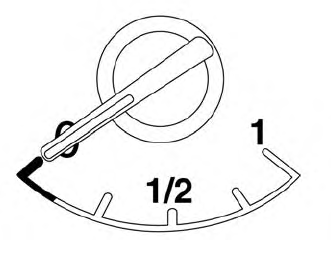Nissan Murano: Maintenance and schedules / Maintenance schedules
To help ensure smooth, safe and economical driving, NISSAN provides two maintenance schedules that may be used, depending upon the conditions in which you usually drive. These schedules contain both distance and time intervals, up to 120,000 miles (192,000 km)/144 months. For most people, the odometer reading will indicate when service is needed. However, if you drive very little, your vehicle should be serviced at the regular time intervals shown in the schedule.
After 120,000 miles (192,000 km)/ 144 months, continue maintenance at the same mileage/time intervals.
ADDITIONAL MAINTENANCE ITEMS FOR SEVERE OPERATING CONDITIONS
Additional maintenance items for severe operating conditions should be performed on vehicles that are driven under especially demanding conditions. Additional maintenance items should be performed if you primarily operate your vehicle under the following conditions:
- Repeated short trips of less than 5 miles (8 km).
- Repeated short trips of less than 10 miles (16 km) with outside temperatures remaining below freezing.
- Operating in hot weather in stopand- go “rush hour” traffic.
- Extensive idling and/or low speed driving for long distances, such as police, taxi or door-to-door delivery use.
- Driving in dusty conditions.
- Driving on rough, muddy or salt spread roads.
- Towing a trailer, using a camper or using a car-top carrier.
NOTE:
For vehicles operated in Canada, both standard and severe maintenance items should be performed at every interval.
 Chassis and body maintenance
Chassis and body maintenance
Brake lines and cables: Visually inspect for
proper installation. Check for chafing,
cracks, deterioration, and signs of leaking.
Replace any deteriorated or damaged
parts immediately...
 Standard maintenance
Standard maintenance
The following tables show the standard
maintenance schedule. Depending upon
weather and atmospheric conditions,
varying road surfaces, individual driving
habits and vehicle usage, additional or
more frequent maintenance may be required...
Other information:
Nissan Murano (Z52) 2015-2024 Service Manual: Moonroof Motor Assembly
Exploded View 1. Panoramic roof glass 2. Moonroof drain 3. Wind deflector 4. Glass lid 5. Side trim covers (LH/RH) 6. Front drain hose (LH/RH) 7. Moonroof motor assembly 8. Sunshade motor assembly 9. Moonroof front bracket (LH/RH) 10...
Nissan Murano (Z52) 2015-2024 Service Manual: B2130 Eeprom
DTC Description DTC DETECTION LOGIC DTC No. CONSULT screen terms (Trouble diagnosis content) DTC Detection Condition B2130 EEPROM (EEPROM malfunction) Diagnosis condition — Signal (terminal) — Threshold Driver seat control unit detected a CPU malfunction...
Categories
- Manuals Home
- Nissan Murano Owners Manual
- Nissan Murano Service Manual
- Tire rotation
- System malfunction
- Power Steering Fluid (PSF)
- New on site
- Most important about car
Fuel gauge

The gauge indicates the approximate fuel level in the tank.
The gauge may move slightly during braking, turning, acceleration, or going up or down hills.
The gauge needle returns to 0 (Empty) after the ignition switch is placed in the OFF position.
